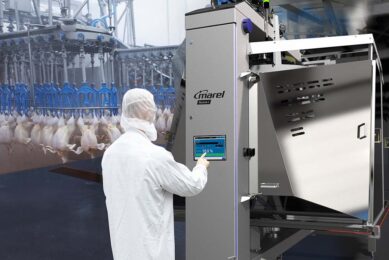Integrated thoughts

Recently I took part in a seminar on breeding and hatching, which was organised by Wageningen University in my home country, the Netherlands. Among the various topics covered, was one on the difference between integration models.
In the Netherlands, most farms (rearing, breeding and broiler growing) are individually, family owned farms. In most cases this also holds true for hatcheries, feed manufacturing and processing operations which are privately owned businesses. In other words, in this (horizontal) integration model everyone does his utmost to get the most out of their individual business. At the lowest possible expense of course.
In many other countries, the vertical integration model is common use. Everything is owned by one professional company. From sometimes even GPS, up till (further) processing and marketing the end product under their own brand name. Think about Betagro in Thailand, Al Watania in Saudi Arabia, Grupo Melo in Panama and Ariztia in Chile. Many more of such companies exist everywhere in the world.
Personally, I grew up on a (family owned) breeder farm. The Dutch model. And I have seen and experienced the efforts, and sometimes the struggle, my parents had to make to keep the farm moving on.. It was a modern farm with a substantial size in the mid-sixties. But not incidentally the times were tough. And there was no budget (and intention) to invest in the entire chain. And why should they? Did my parents need to invest in the quality of the chicks that were leaving the hatchery, in the next stage? Simply said, that was their responsibility. The hatchery owner had to do a good job on the incubation side. My father did all he could to supply good quality eggs. Using all his knowledge and skills. And using good input: parent stock, housing, feed, medication, whatever was needed. But he did not invest in something he was not rewarded for. Logical choice.
That’s a long time ago. But the model still exists. And history has proved that this model has its advantages too. After all, everyone wants to get the best result out of their own business.
But certainly the vertical integration model has proved to be very efficient. In such companies, there will be no question whether or not breeders need to be vaccinated to obtain maternal immunity in their offspring. And feed will be formulated exactly according to the needs of that particular flock. Everything is integrated, with the aim of achieving the highest quality output possible at the lowest possible expense. And the best possible hygiene level, uniformity, logistics et cetera. Everything according to one standard. Something to learn from and an idea in this context came across during the seminar of Wageningen University. Why shouldn’t individual farmers join forces and together set up a kind of vertical integration? Together strong and benefit from the choices that are made in common. Certainly a good idea and worth thinking about.
Join 31,000+ subscribers
Subscribe to our newsletter to stay updated about all the need-to-know content in the poultry sector, three times a week. Beheer
Beheer








 WP Admin
WP Admin  Bewerk bericht
Bewerk bericht